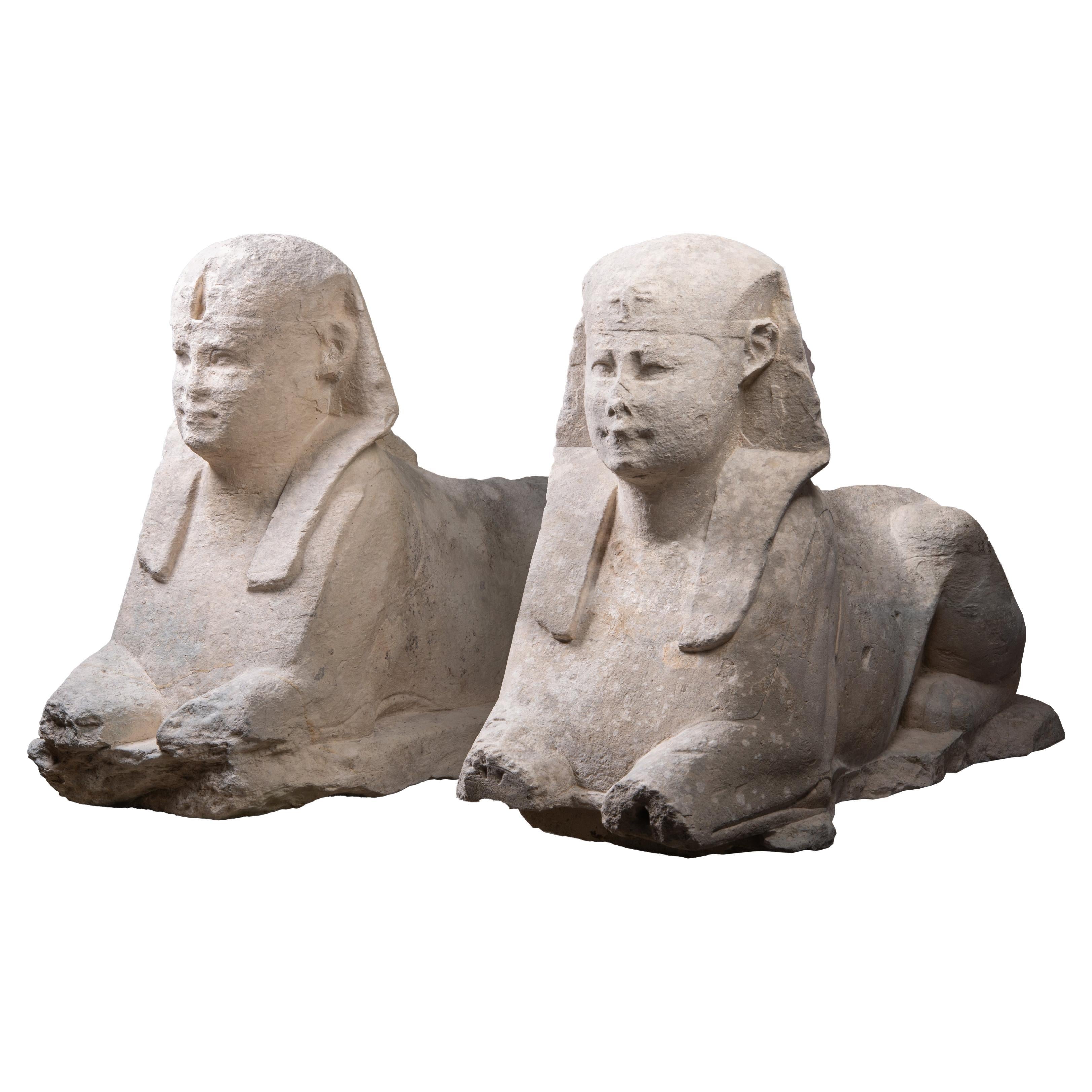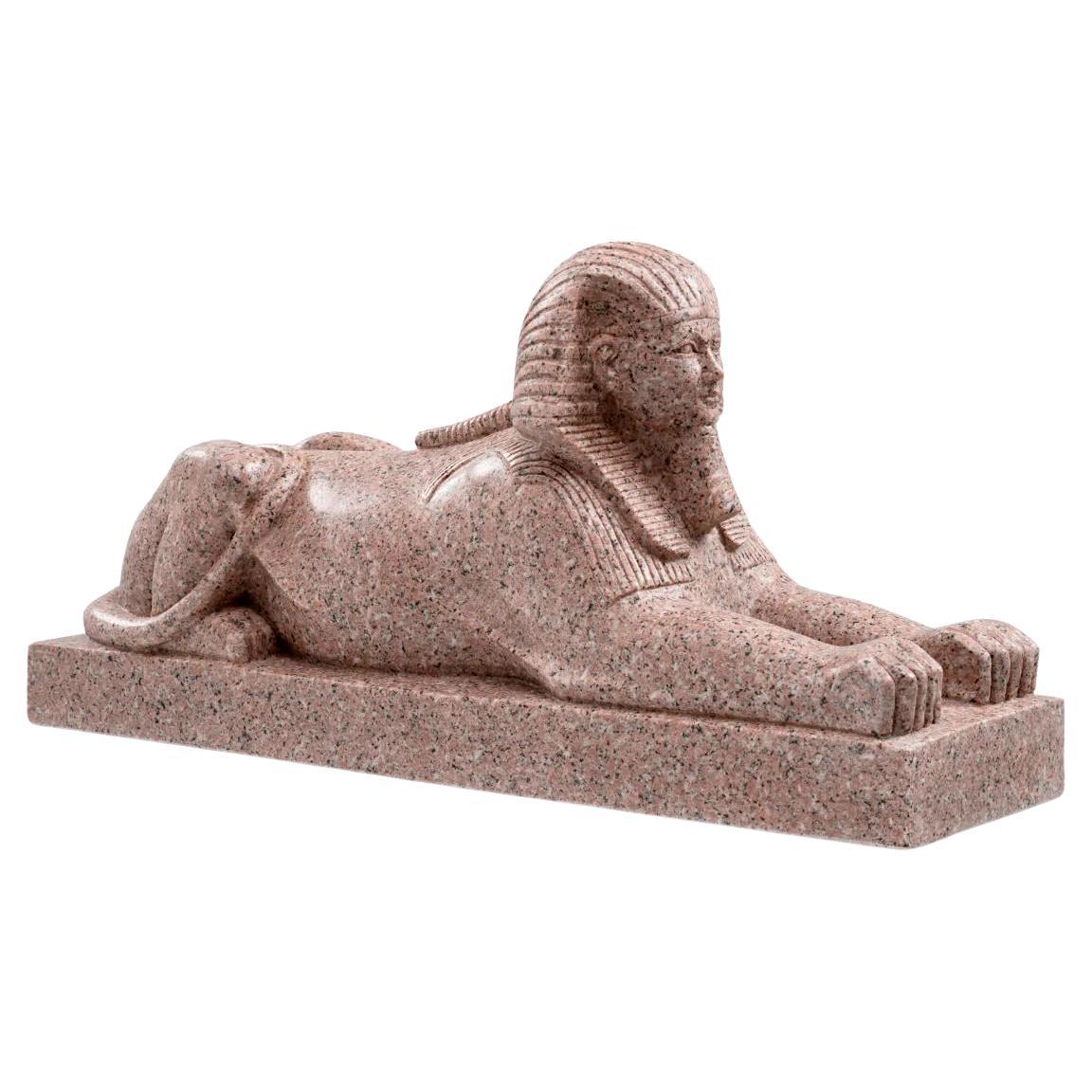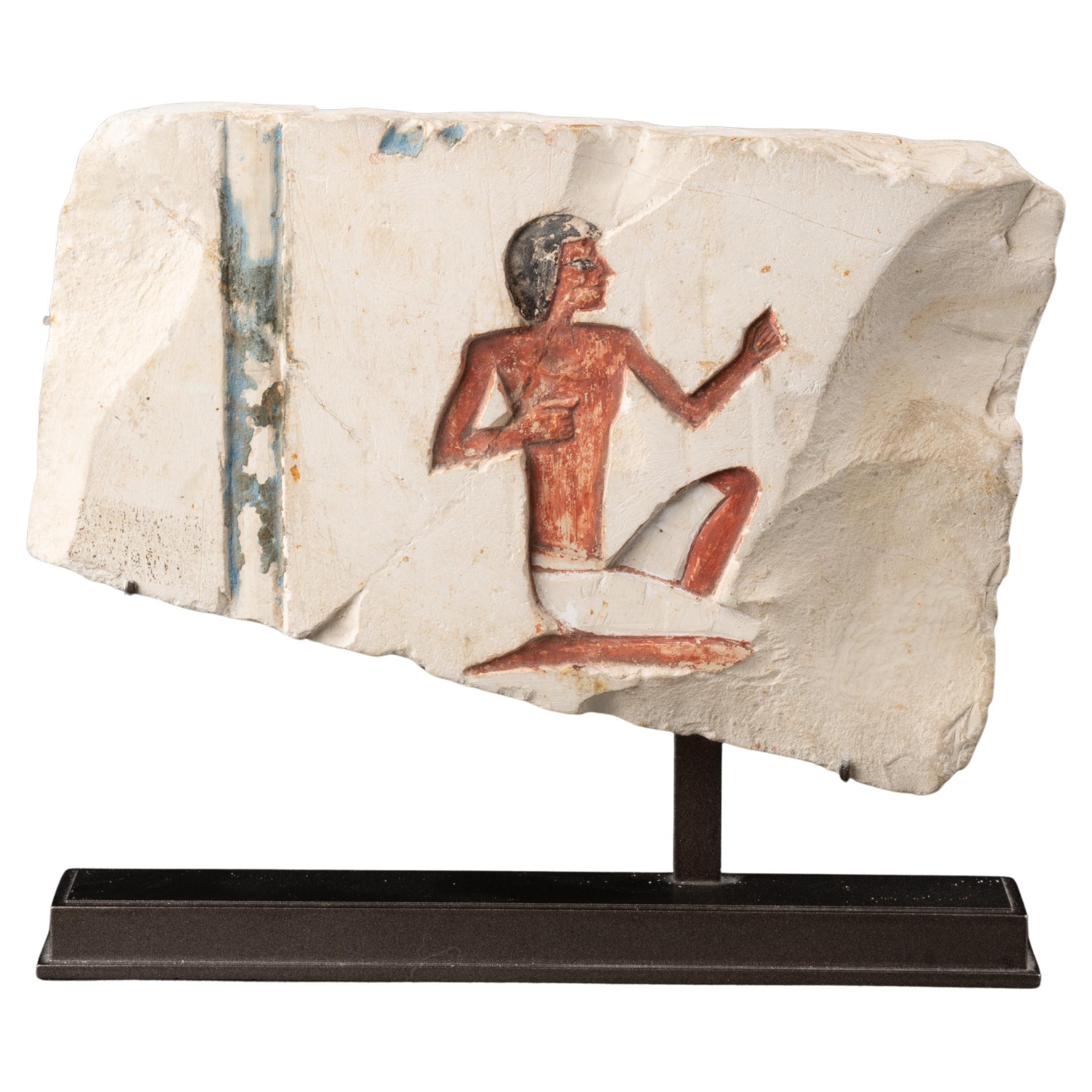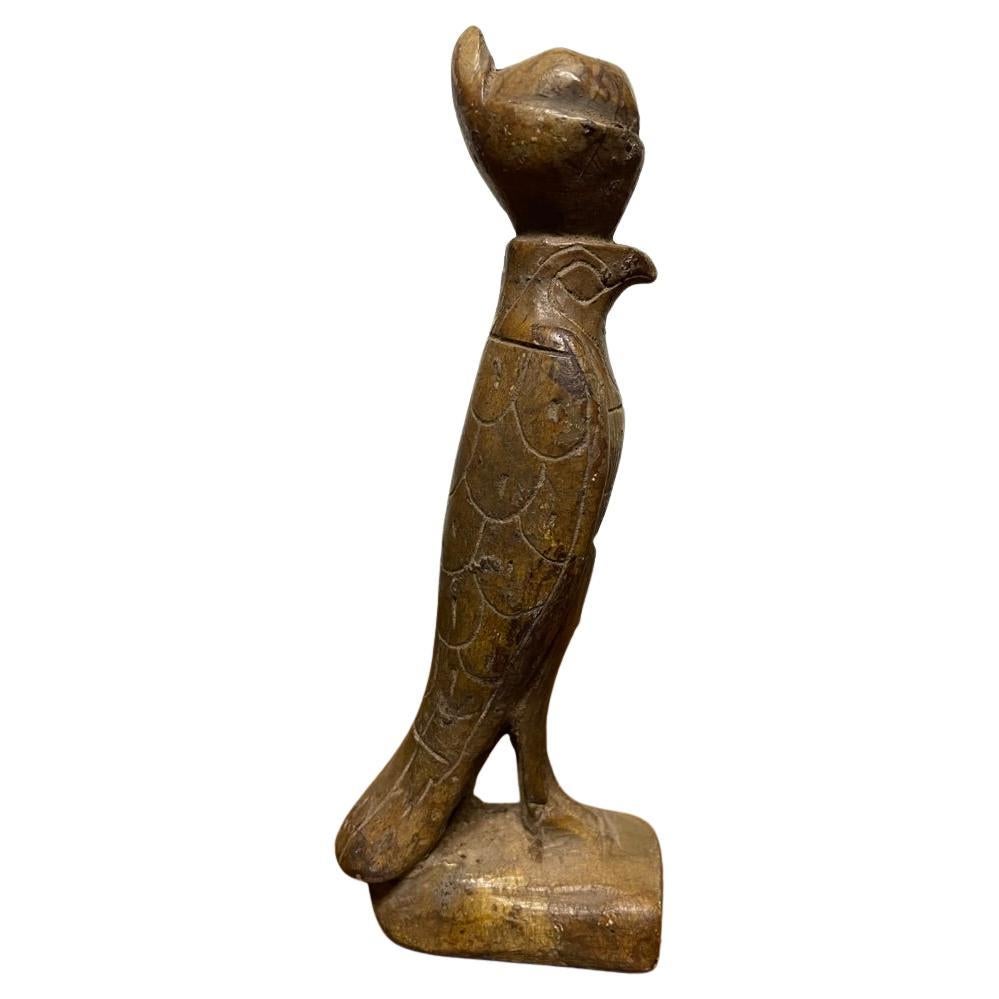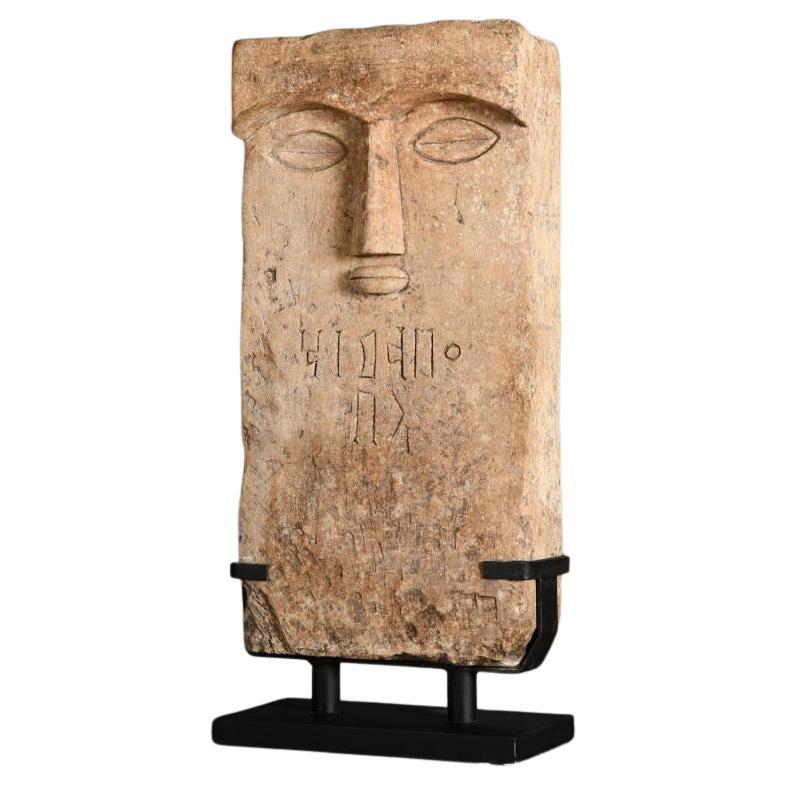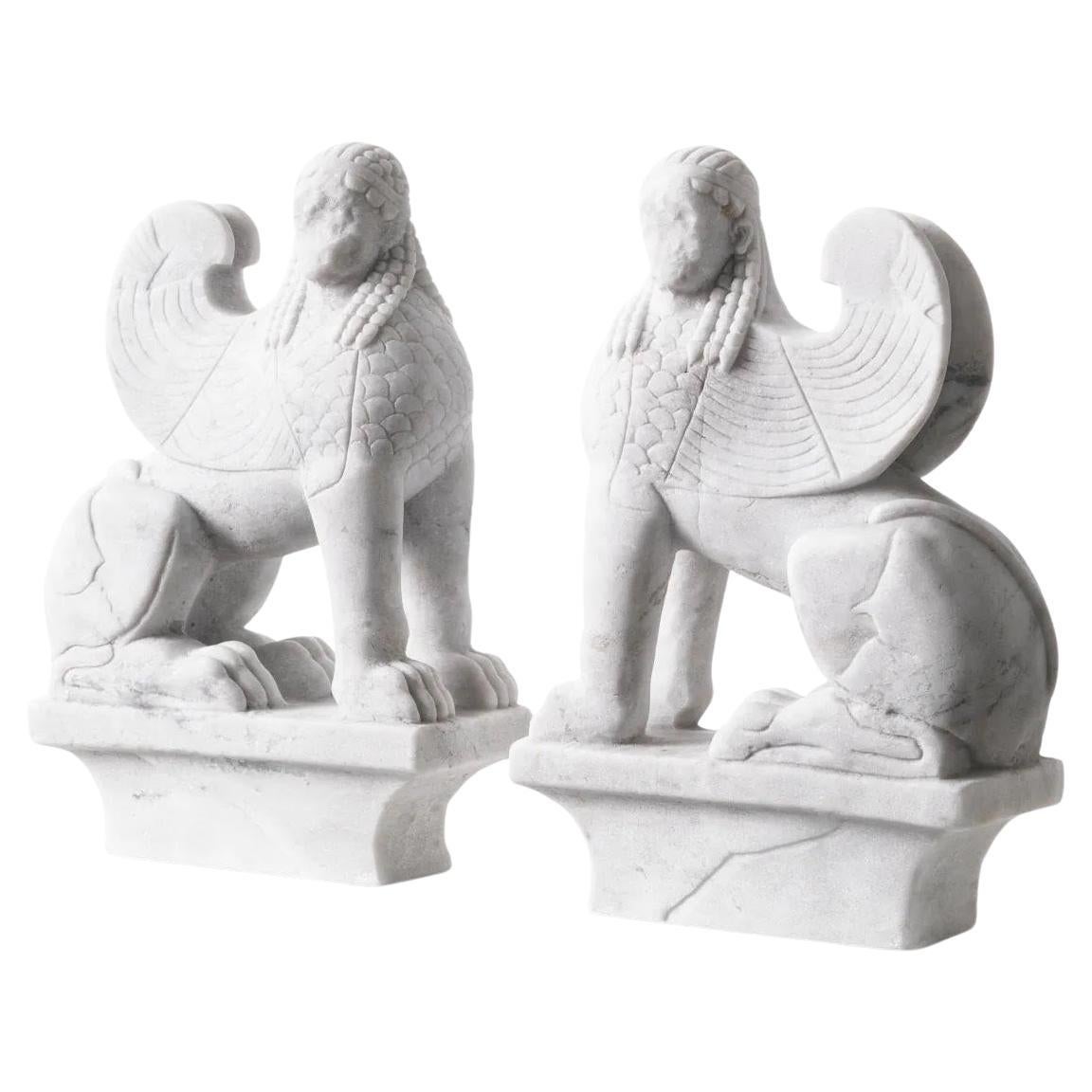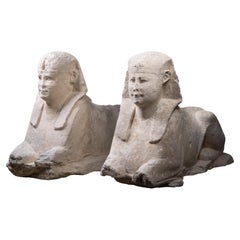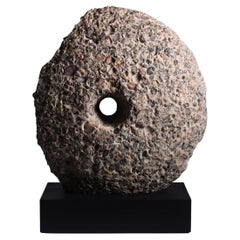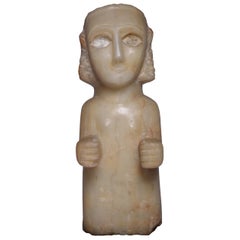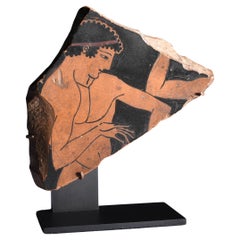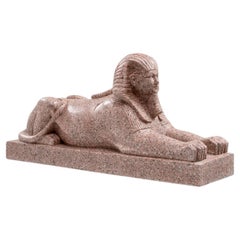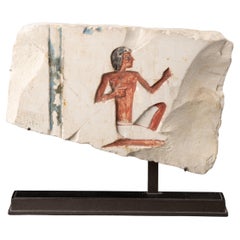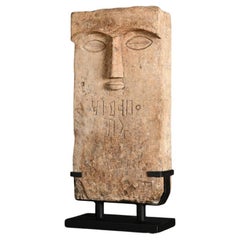Items Similar to Ancient Egyptian Stele of Heres
Want more images or videos?
Request additional images or videos from the seller
1 of 6
Ancient Egyptian Stele of Heres
About the Item
WOODEN STELE OF HERES-IB, DAUGHTER OF PADI-AMUN, SON OF HOR
Third Intermediate Period
Dynasty 22, ca. 945-900 BC.
Egypt, Thebes
25 x 22.5 x 2 cm
Without base: 15.3 cm
PROVENANCE
Collection of Henri Lefort des Ylouses (1882-1978), acquired from
‘Delcourt’ in 1930 [according to label on reverse and signed attestation from Eric Lefort des Ylouses].
Subsequently by descent to Daniel Lefort des Ylouses (1945-2022).
Subsequently by descent to Henri Lefort des Ylouses (born 1977).
A particularly finely painted wooden stele from the Third Intermediate Period, depicting Heres-ib, presenting offerings to Osiris. A round-topped stele depicting an offering scene, framed by doorleaves, a celestial sky vault and red earth. Adorned in a diaphanous gown, with a perfume cone atop her head, Heres-ib stands with outstretched arms, presenting offerings of wine and bread to the mummiform god Osiris, depicted with a sun-disk. In the lunette lies another sun-disk, accompanied by two uraei, and flanked by offerings of incense and bread. On the table between them, further offerings of bread are depicted, and beneath, two jars of wine wrapped in the twisted stems of lotus flowers.
In front of the figure of Osiris, a single line of hieroglyphs reads:
‘Osiris, may he give an invocation offering of bread and beer.’
Facing this, another inscription confirms the name and title of the stela’s owner:
‘The Mistress of the House Heres, daughter of Pa-di-Amun, justified, son of Hor, justified.’
The Third Intermediate Period (c.1070-664 BC) was characterised by profound political and cultural change. Following the political fragmentation of the 21st Dynasty, in 945 BC, Egypt’s throne passed to a powerful family of Libyan descent. Dynasty 22 brought about a reimposition of central authority
followed by a period of inevitable cultural transformation, which also extended to burial practices. With elaborate, decorated graves now almost completely abandoned, the deceased were often buried in existing tombs, repurposed for their journey to the underworld. As such, tomb furnishings also underwent significant changes. However, while everyday objects were no longer considered important funerary paraphernalia, the two
objects which remained crucial to the burial rites were coffins and funerary stelae, and both adopted new significance during this period.
Indeed, it was during this period that wooden funerary stelae reached their highpoint. Emerging in the First Dynasty as burial markers, from the Middle Kingdom onwards they became an integral part of burial furnishings, recording the names, titles and representations of the deceased to keep their memory alive. Furthermore, they played a particularly crucial role in the deceased’s journey to the afterlife. Typically showing the stele’s
owner before an offering table, piled high with the goods they are presenting to the god opposite, the images and inscriptions
served as powerful invocations to the gods, ensuring a safe transition for the departed from the mortal realm to the spiritual
one. Stelae also marked the place where the living could come into contact with the dead, offering both physical remembrance
and spiritual guidance to the family of the deceased.
During their highpoint, the centre of wooden stelae production was in Thebes. Indeed, it is in the Theban necropolis
where the majority of such wooden stelae have been found, or have since been attributed to on account of their fine style. In the few cases where the archaeological context has survived, it is suggested that stelae were free-standing objects, placed next to the coffin in the burial chamber.
This stele can be assigned to the Third Intermediate Period, probably Dynasty 22, on account of its unique decorative agenda. It is also particularly notable for its fine craftsmanship, as well as several delicate features which are rarely seen on others of the same period.
On the right, an elite woman, the owner of the stele, is clad in an elaborate, diaphanous dress covered by a sheer mantle. Her clothing’s sole adornment is the green broad collar, symbolic of her rejuvenation in the afterlife, and atop her head she wears a perfume cone, traditionally painted in red and white. The inscription identifies her as ‘The Mistress of the House Heres, daughter of Pa-di-Amun, justified, son of Hor, justified.’
Heres’ name itself means ‘She (i.e. a goddess) is satisfied.’ In keeping with the canon of proportion used in New Kingdom art (c.1570-1069 BC), her shortened torso and elongated legs creates a slender and feminine figure which is further emphasised by the fall and elegance of the diaphanous dress and mantle. Particular care has gone into the depiction of the deceased, exemplified in the delicate addition of makeup, as well as the
hatching scratched into the plaster to emphasise the lines of the dress and the sheer fabric. The dating of the piece is further consolidated by her accessories, and in particular the style of the perfume cone - broad at the base, divided in two blocks of colour, and surrounded by green vegetation - which is again in line with other depictions of the period. This green vegetation is particularly interesting to note, as it has been seen to represent
the regeneration of the deceased in the afterlife.
Heres stands, arms outstretched in adoration, opposite the standing figure of the bearded mummiform god, Osiris. The very depiction of Osiris confirms the dating of the stele to early in the Third Intermediate Period (probably Dynasty 22) as, by the 9th century BC, the deity was completely replaced by standing or seated figures of Re-Horakhty.10 However, it is his depiction here that is particularly unusual. Osiris is more traditionally
depicted wearing the Atef crown, the white headdress of Upper Egypt, along with the symbols of his kingship and authority in the underworld, the crook and flail (Fig. 1). Yet on the present stele, the figure of Osiris, while holding his crook and flail, is adorned with a sun-disk and uraeus above his head. This is a specific reference to Re, the sun god, under whose control Osiris exercised his power in the underworld. Indeed, in the New
Kingdom and its aftermath, Re was believed to be in charge of both the sky and the underworld, while Osiris only had power over the latter. The authority of the sun god is further emphasised by the central dominance of the sun-disk with flanking uraei in the lunette of the stele. That the complementary relationship between the two gods is depicted here is unusual, and is evidence of the complex and interchangeable nature of Egyptian symbolism. Indeed, in addition to these invocations of the sun god, the flesh of Osiris is painted a light green, reflecting his
own identity as a god of vegetation and regeneration, and again emphasising the spiritual significance of the stele in ancient Egyptian funerary rites.
Standing between Heres and Osiris is an offering table, painted in blue and white, on top of which are offering loaves. Either side of the offering table, sealed jars of wine sit on low stands, and are embellished with lotus flowers symbolic of rebirth, twisted around the body of the vessel. This scene is mirrored by a single line of hieroglyphs in front of the figure of the deity, which reads: ‘Osiris, may he give an invocation offering of bread and
beer.’ With funerary wishes for beer and bread common to the burial rite, the specific depiction of other offerings was up to the discretion of the
artist.13 Indeed, in the lunette, and to either side of the dominant sun-disk, are the unusual offerings of incense pots. This iconographic feature first
occurs in the lunettes of stelae during the Middle Kingdom, where, in some examples, the incense pots are held by outstretched human arms, mirroring the hieroglyph for henqet, meaning ‘offering(s).’ That these incense pots are meant as further offerings is confirmed by the presence of the
bread-loaf hieroglyph, used for the letter t, below each incense pot, serving as feminine phonetic complement for the term for offerings.
This scene of Heres and Osiris is carefully framed to heighten its symbolism, as well as to producing a carefully balanced and visually pleasing composition. Indeed, to the left and right of the scene doorleaves, painted in beige with fine red lines, symbolise the doors of Heaven. Their inclusion in the decorative agenda of stelae has been identified as a particularly rare one, and dated to the 7th century BC, although earlier examples do exist. Moreover, at their base, a simple band of red and black at the base represents the earth, while at the top, they hold up an overarching band of dark blue representing the vault of the sky. Highlighting the cosmographical setting of the main scene, this clever framing is perhaps also carefully constructed to reflect the journey from the mortal realm to the afterlife that the deceased must now undertake.
- Dimensions:Height: 9.85 in (25 cm)Width: 8.86 in (22.5 cm)Depth: 0.79 in (2 cm)
- Style:Egyptian (Of the Period)
- Materials and Techniques:
- Place of Origin:Egypt
- Period:
- Date of Manufacture:Circa 945-900 BC
- Condition:Wear consistent with age and use.
- Seller Location:London, GB
- Reference Number:1stDibs: LU1052244472172
About the Seller
5.0
Recognized Seller
These prestigious sellers are industry leaders and represent the highest echelon for item quality and design.
Established in 2008
1stDibs seller since 2014
100 sales on 1stDibs
Typical response time: 2 hours
Associations
LAPADA - The Association of Arts & Antiques DealersInternational Confederation of Art and Antique Dealers' AssociationsThe British Antique Dealers' Association
- ShippingRetrieving quote...Shipping from: London, United Kingdom
- Return Policy
Authenticity Guarantee
In the unlikely event there’s an issue with an item’s authenticity, contact us within 1 year for a full refund. DetailsMoney-Back Guarantee
If your item is not as described, is damaged in transit, or does not arrive, contact us within 7 days for a full refund. Details24-Hour Cancellation
You have a 24-hour grace period in which to reconsider your purchase, with no questions asked.Vetted Professional Sellers
Our world-class sellers must adhere to strict standards for service and quality, maintaining the integrity of our listings.Price-Match Guarantee
If you find that a seller listed the same item for a lower price elsewhere, we’ll match it.Trusted Global Delivery
Our best-in-class carrier network provides specialized shipping options worldwide, including custom delivery.More From This Seller
View AllAncient Egyptian Monumental Temple Sphinxes
Located in London, GB
A pair of monumental limestone sphinxes of Pharaoh Nectanebo I, from the processional avenue of the Serapeum of Memphis, 30th Dynasty, circa 379 - 360 BC.
The sphinxes of the Serapeum have captivated travellers since Roman times. However, despite their significance, they are conspicuously absent from the collections of most major museums. Indeed, their existence in private hands is so improbable, and their imitations so numerous, that the present sphinxes were assumed to be modern copies throughout their recent ownership history. Finally recognised and conserved after an extraordinary chance discovery at a garden furniture sale...
Category
Antique 15th Century and Earlier Egyptian Egyptian Figurative Sculptures
Materials
Limestone
Ancient Gallo Roman Millstone
Located in London, GB
Gallo-Roman Quernstone
Fécamp, Seine-Maritime, France
Circa 2nd century BC - mid-4th century AD
Carved puddingstone
Diameter: 43 cm
The lower grinding stone from a late Iron Age, ea...
Category
Antique 15th Century and Earlier French Mounted Objects
Materials
Stone
Ancient South Arabian Alabaster Statue
Located in London, GB
South Arabian Calcite female figure
3rd Century BC to 1st century A.D.
Calcite Alabaster
height: 30.5 cm
A magnificent alabaster female figure, a f...
Category
Antique 15th Century and Earlier Yemeni Figurative Sculptures
Materials
Alabaster
Ancient Greek Red Figured Vase Fragment with an Athlete
Located in London, GB
An exquisite example of the artistic heights achieved by the most talented Greek painters of the Classical Period. A precious fragment from the centre of a wine cup, detailing a fine...
Category
Antique 15th Century and Earlier Mounted Objects
Materials
Pottery
Hellenistic Grotesque Theatre Mask of Maccus
Located in London, GB
Grotesque theatrical mask of Maccus
Late Hellenistic or Early Imperial period, circa 1st century B.C. – 1st century A.D., likely from Southern Italy.
Terracotta with remains of pin...
Category
Antique 15th Century and Earlier Italian Classical Roman Figurative Scul...
Materials
Terracotta
Roman Marble Statuette of Jupiter
Located in London, GB
Roman Marble Fragment of jupiter
Circa 2nd-3rd Century A.D.
Measure: Height: 19.7 cm
This beautiful Roman fragmentary statuette depicts Jupiter, the king of the gods, here recognisable from his two chief attributes, the eagle with outstretched wings - according the Pseudo-Hyginus, singled out by Jupiter because ''it alone, men say, strives to fly straight into the rays of the rising sun'' - and the base of the scepter, which remains at the side of the left foot, an aspect likely borrowed from the statue of Zeus at Olympia, once one of the Seven Wonders of the World. Though much of the original piece has been lost, the subtle anatomical detail in the feet mark this out as a piece of exceptional quality, and the work of an artist of particular talent and patience - as Johann Winckelmann once said of the famous Belvedere Torso, ''if you contemplate this with a quiet eye [...] the god will at once become visible in this stone.''
This fragment once caught the eye of Henry Howard, 4th Earl of Carlisle (1694-1758), a Knight of the Garter and among the most prolific collectors of his day. The piece, acquired during his travels to Rome, was proudly displayed on an alcove of the Western Staircase of Castle Howard...
Category
Antique 15th Century and Earlier Italian Classical Roman Figurative Scul...
Materials
Marble
You May Also Like
Granite Sculpture of a Sphinx in the Taste of Ancient Egypt.
Located in Saint-Ouen, FR
Granite sculpture of a Sphinx in the taste of ancient Egypt, 20th century.
Granite sculpture of a Sphinx in the taste of ancient Egypt, 20th century.
H: 28cm, W: 59cm, D: 16,5cm
Pr...
Category
21st Century and Contemporary French Egyptian Animal Sculptures
Materials
Granite
Egyptian Fragment of a Seated Man - Ancient Egypt, 26th Dynasty (664-525 BC)
Located in Bruxelles, BE
Egyptian Fragment of a Seated Man
Limestone - polychromy
Ancient Egypt, 26th Dynasty (664-525 BC)
Most likely from the tomb of Montw-m-H3t
Provenanc...
Category
Antique 15th Century and Earlier Egyptian Egyptian Figurative Sculptures
Materials
Limestone
Grand Tour Ancient Egyptian Style Carved Soapstone Figure of Horus
Located in Stamford, CT
19th century Egyptian stone carving of Horus in the ancient style, the god in the form of a falcon. Quite possibly much earlier in date, it came from a collection that did have ancie...
Category
Antique Late 19th Century Egyptian Egyptian Animal Sculptures
Materials
Soapstone
Sculpture, Stone Stele Representing an Ancient Divinity, 20th Century.
Located in Saint-Ouen, FR
Sculpture, stone stele representing an ancient divinity, 20th century.
Sculpture of an ancient divinity, stone stele on a metal base, 20th century.
H: 69.5cm, W: 32cm, D: 15cm
Category
20th Century European Mid-Century Modern Figurative Sculptures
Materials
Stone, Metal
Sculpture of a Pair of Sphinxes in White Marble, Style of Ancient Egypt.
Located in Saint-Ouen, FR
Sculpture of a pair of Sphinxes in white marble, contemporary work in the taste of Ancient Egypt, XXIst century.
Sculpture of a pair of sphinxes in white marble, contemporary work i...
Category
21st Century and Contemporary French Modern Animal Sculptures
Materials
Marble
White Marble Sculpture of a Reclining Lion in the Taste of Ancient Egypt.
Located in Saint-Ouen, FR
White marble sculpture of a reclining lion in the taste of ancient Egypt, 20th century.
A white marble sculpture of a reclining lion in the taste of ancient Egypt, 20th century.
H: ...
Category
21st Century and Contemporary French Modern Animal Sculptures
Materials
Marble
